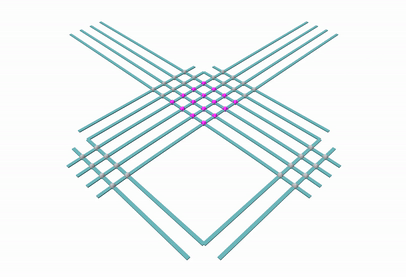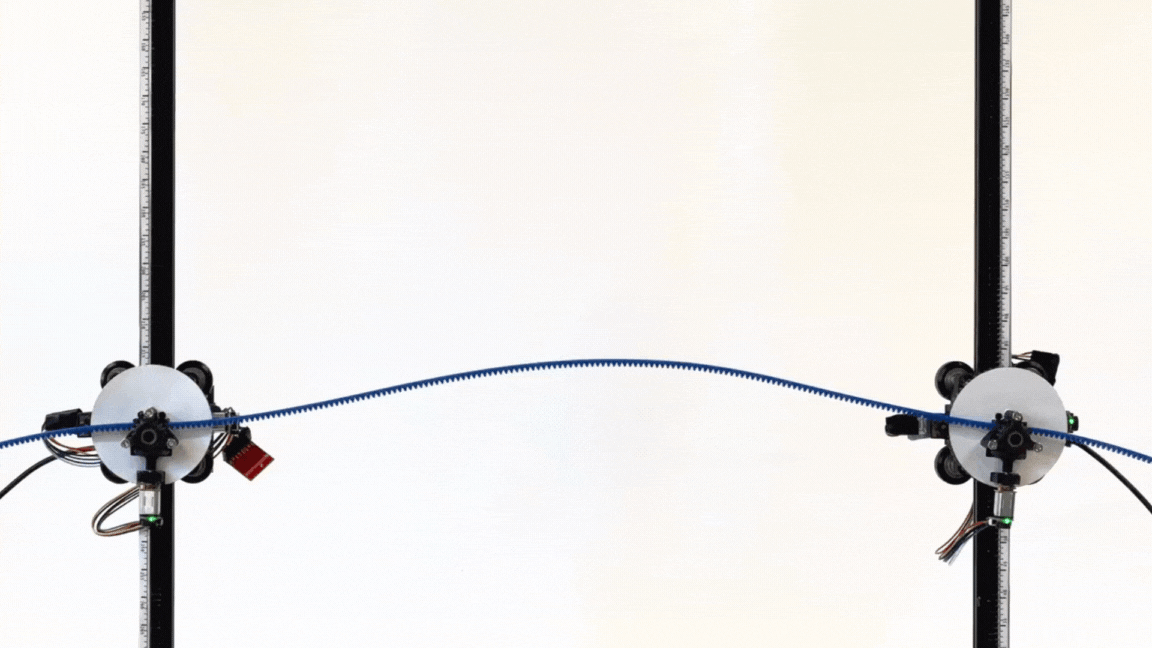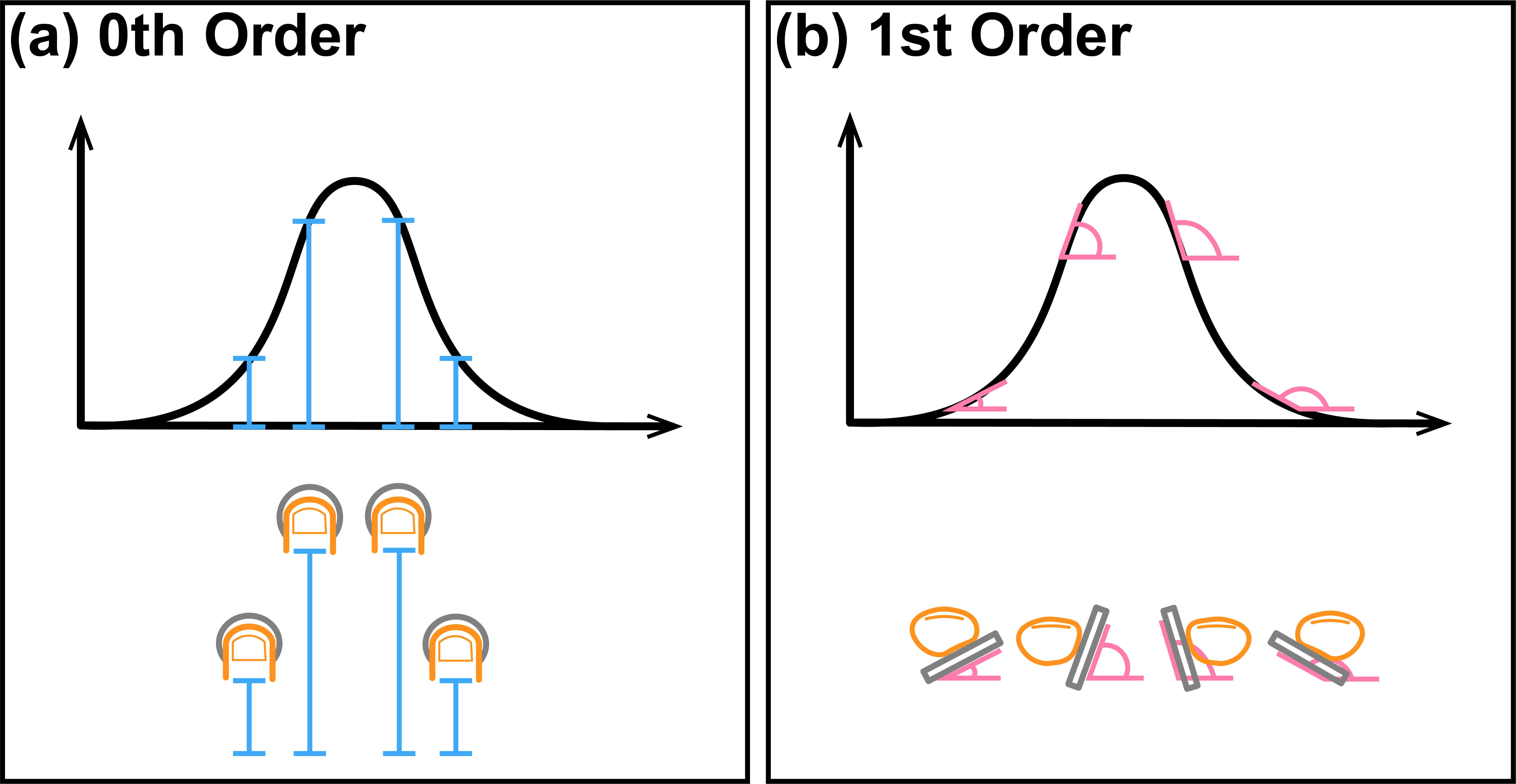
Reconfigureable Gridshell Display
Sofia Wyetzner and Wing-Sum Law, and Sean Follmer
This project is a work in progress. It extends the curved line display into a surface display by combining curved line segments in a grid. As with the curved line display, we use the discrete elastic rods formulation to model the system. To extend discrete elastic rods, my collaborator, Sofia Wyetzner, also added aspects to the model to capture the intersections of the rods. At each intersection there is a passive coupler that allows sliding and rotating. We actuate three degrees at each end of a rod – bias, extrude, and translate.

